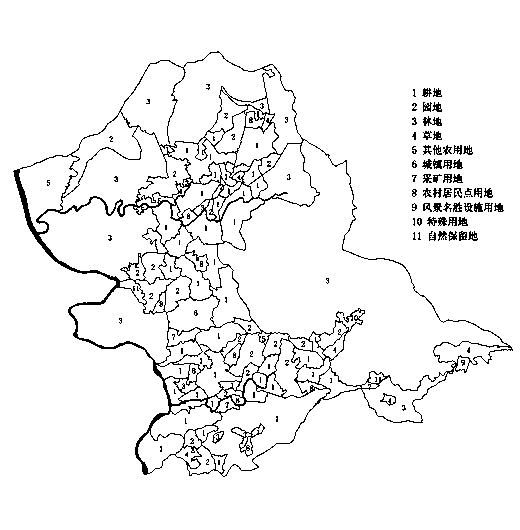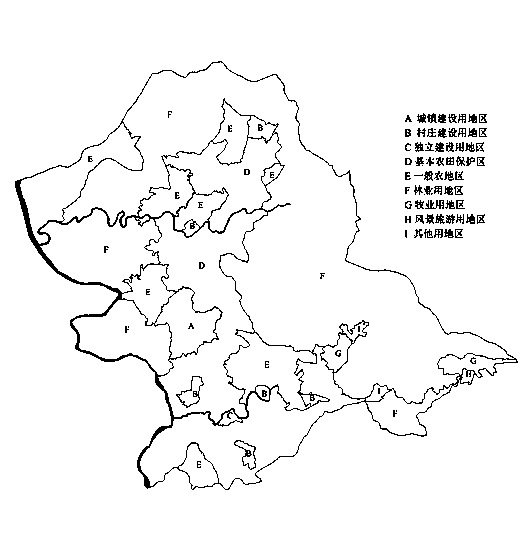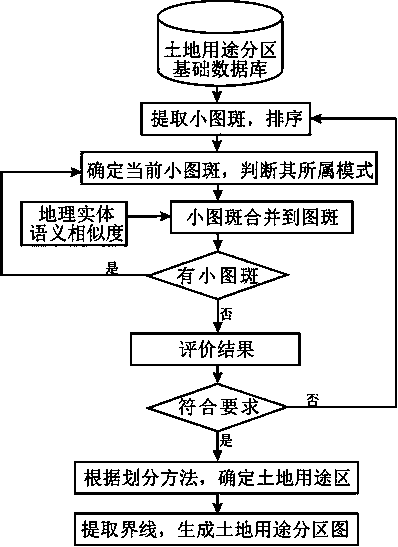Land use zoning method giving consideration to geographic entity semantic similarity
A semantic similarity and geographic entity technology, applied in the field of land use planning, can solve problems such as difficult zoning effects, lack of automatic implementation, and complex calculations
- Summary
- Abstract
- Description
- Claims
- Application Information
AI Technical Summary
Problems solved by technology
Method used
Image
Examples
Embodiment Construction
[0060] Land use zoning refers to the division of land within counties and townships (towns) into specific areas, and stipulates different land use control rules to implement control and guidance measures for land use. County-level planning can generally be divided into basic farmland protection area, general agricultural area, forestry area, animal husbandry area, urban construction area, village and town construction area, village and town construction control area, independent construction area, scenic tourism area, Eight types of land use areas in natural and cultural landscape protection areas. In the township (town) level planning, the type of the second-level area can be further determined on the basis of the above-mentioned land use area according to the local natural conditions and the needs of land use control. In principle, land use areas do not overlap with each other, and land use areas may not cover all the land within the planning range. The essence of the land ...
PUM
 Login to View More
Login to View More Abstract
Description
Claims
Application Information
 Login to View More
Login to View More - R&D
- Intellectual Property
- Life Sciences
- Materials
- Tech Scout
- Unparalleled Data Quality
- Higher Quality Content
- 60% Fewer Hallucinations
Browse by: Latest US Patents, China's latest patents, Technical Efficacy Thesaurus, Application Domain, Technology Topic, Popular Technical Reports.
© 2025 PatSnap. All rights reserved.Legal|Privacy policy|Modern Slavery Act Transparency Statement|Sitemap|About US| Contact US: help@patsnap.com



